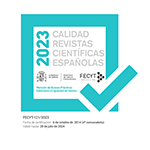Modernism and the right to the city: prefigurations and contradictions in postwar urban design
Abstract
The notion of ‘the right to the city’ is today a popular slogan both within the academy and among social movements and public administrations. Many of these manifestations, however, are far removed from the initial meaning that Henri Lefebvre assigned to the concept more than fifty years ago. In fact his original formulation was itself elusive. A contextualization in the cycle of works written by the author between the 1960s and the mid-1970s is helpful to better grasp it. Lefebvre’s contributions during this period have often been presented as a critique of Modernist architecture and urbanism, which were in full swing after the Second World War. However, certain design experiments from this period anticipated, in a contradictory fashion, some of the concerns that would later find full development in the work of Lefebvre. This article begins by identifying four central aspects in the original concept of the ‘right to the city’: the idea of the city as a collective ‘work’, the notion of ‘urban life’, the right to ‘centrality’ and the concept of ‘differential space’. The second part of the article explores a tradition of CIAM-related experiences that anticipated some of these elements between the 1940s and the 1960s, even in an incomplete, often inconsistent fashion.
Downloads
Article download
License
In order to support the global exchange of knowledge, the journal Arte, Individuo y Sociedad is allowing unrestricted access to its content as from its publication in this electronic edition, and as such it is an open-access journal. The originals published in this journal are the property of the Complutense University of Madrid and any reproduction thereof in full or in part must cite the source. All content is distributed under a Creative Commons Attribution 4.0 use and distribution licence (CC BY 4.0). This circumstance must be expressly stated in these terms where necessary. You can view the summary and the complete legal text of the licence.










